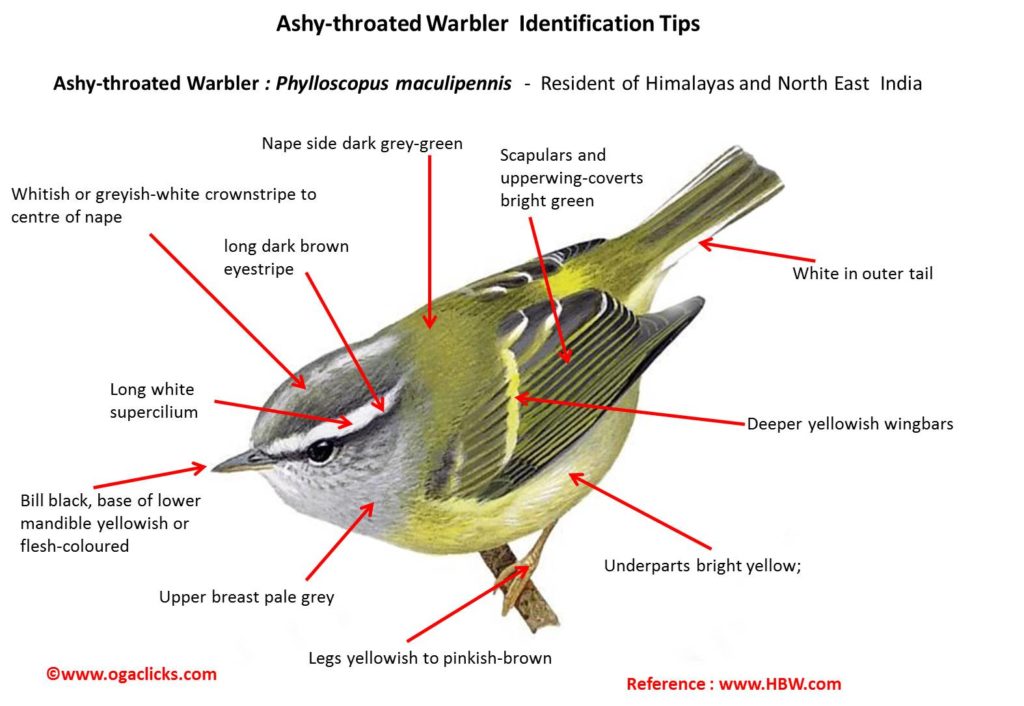Ashy-throated Warbler

Ashy-throated Warbler Phylloscopus maculipennis
Etymology :
- Phylloscopus : Greek word phullon – leaf; skopos – seeker
- Maculipennis : Latin word macula – spot ; pennis–winged
Distribution in India: Resident in Himalayas and North East India.
Description: Size of 9 cm. It is a small and extremely active leaf-warbler with small and delicate-looking bill, with pronounced head stripes, wingbars and pale rump. The nominate race has crown and nape side dark grey-green, with whitish or greyish-white crownstripe to center of nape; long white supercilium, equally long dark brown eyestripe; mantle, back, scapulars and upperwing-coverts bright green, median coverts narrowly tipped yellowish-white, greater coverts more broadly tipped the same, rump pale yellow; flight-feathers and tail feathers dark brown, inner webs of outer three tail feathers white ; chin to cheek and upper breast pale grey, rest of underparts bright yellow; iris dark brown; bill black, base of lower mandible yellowish or flesh-coloured; legs yellowish to pinkish-brown.Both the sexes look similar.
Habitat: It is found during breeding season in mixed oak and conifer forests with thick undergrowth, like rhododendrons and bushes, between 1800 m and 3500 m; in non-breeding season found in broadleaf forest and secondary forest in foothills and lowlands, between 600 m and 2100 m.
Food Habits: It eats small insects and larvae. It forages singly or, in non-breeding season, in mixed-species flocks. Keeps high in trees, and forages mostly in canopy. It is restless and extremely active.
Breeding Habits: They breed in March-July in India. The nest is domed, made of moss, grass, bamboo leaves, bark fibers, dry pine needles or rootlets, lined with fine moss and lichens, placed on or close to ground. They lay a clutch of 3-4 eggs. The incubation is done by both parents for a period of 2 weeks. The fledging period is 2 weeks. The young fed by both parents.